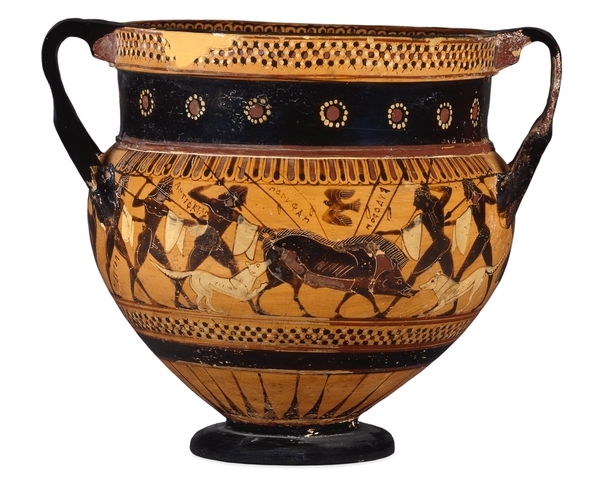Greeks, Etruscans and Romans
The Greeks
It may surprise you to learn that the early Greeks did not educate their little girls, but the boys were sent to school daily, where they received instruction in Grammar, Music and Gymnastics. And it may also surprise you to learn that it is to the Greek nation that we are indebted for much of the civilization we possess today.
Greek artists attained perfection in sculpture and architecture. The language of Greece was a perfect one and Literature in that far off land had reached a high state of development long before Christ was born. It was in this atmosphere that our civilization of today had its beginnings.
But although the Greeks perfected many of the arts, we learn that they made but little progress in the art of painting. They were fond of decoration and that is why the artists of that nation beautifies their temples and residences with frescoes. (A fresco is a picture painted in water colors on damp plaster.) They even decorated their vases with religious and historical scenes and also painted the draperies and hair of the figures carved thereon.
But to return to our subject "Greek Painters", the names of only four have come down to us. They are Polygnotus, Xeus, Apelles, and Protogenes. I do not believe any of the works of these men have survived the ages, although in the British Museum, vases decorated by other Greek painters may be seen, and writers tell us that the works of the artists of Etruria and Rome were greatly influenced by them.

The Hunt Krater, before 700 BC
wine bowl for mixing wine with water
The Etruscans
The Etruscans were not of European origin. Historians tell us that about ten centuries before the Christian era, a tribe of people emigrated from Asia and settled in Italy. The part of Italy in which they established their homes was called Etruria, and the inhabitants were known as Etruscans. like the Egyptians, they decorated their tombs with paintings.
In the ruins of their temples and buildings, many beautiful vases have been found. However, they are not the work of the Etruscans, but are believed to have been imported from Greece. The Etruscan artists copied the works of the Greeks, but they stamped their paintings with a native individuality that distinguished them from the Greek paintings. We may learn much of the mode of living, customs, religion and dress of the Etruscans from the mural paintings handed down to us by them.
For seven hundred years the Etruscans continued developing the arts, and at the end of that period they were attacked and conquered by the Romans.
And now we will visit the Romans, the last of the great nations of antiquity, and see what that powerful people accomplished in the field of painting.
Ancient Rome
The Romans decorated the walls of their homes with historical scenes, landscapes and the artist's interpretation of mythological stories.
Their paintings, however, were produced under the influence of Greek artists at a time when art in that country was on the decline. As a result the ancient Romans did not produce anything in painting that would warrant our crediting them with any progress in it.
"And now, my dear children, we conclude our lesson on the Ancient World with many of the arts highly developed, but with Painting, born about four thousand years before the Christian era, practically in the elementary stage."
Tomorrow, Grandmother continued, " when you return from school, we will try to learn something about the development of Painting in the Christian era. In the meantime I will prepare a list of question on today's talk, and I hope you will be able to answer all of them before we take up our next lesson."
"Thank you, Grandmother, we will be here right after school" the children answered, and be sure to have your nap before we arrive home, they told her.
Grandmother laughingly assured her audience that she would not sleep too long, but would be on time. Then she dismissed her class for the day.
Questions
The following are the questions she prepared for the children. See how many of them you can answer without referring to the script.
- Into what two groups are the arts divided?
- What do you mean by the "Fine Arts"? What do you mean by the "Useful Arts?
- To what group does painting belong?
- When was art born? Tell something of its development.
- How did the art of painting begin?
- Are Egyptian paintings valuable?
- What are these picture paintings called?
- Why did the Egyptians paint these pictures? What is the story they tell?
- Did the civilized world always understand the meaning of the Egyptian paintings?
- Tell what you know of the finding of the key to the pictures.
- What do you know about painting in Babylonia and Assyria?
- What did the Phoenicians do for the world?
- In which of the Fine Arts did the Greeks attain perfection?
- Who were the Etruscans?
- Did the ancient Romans make any progress in the art of painting?
| Page 3 | Beginning of Book | Page 5 |